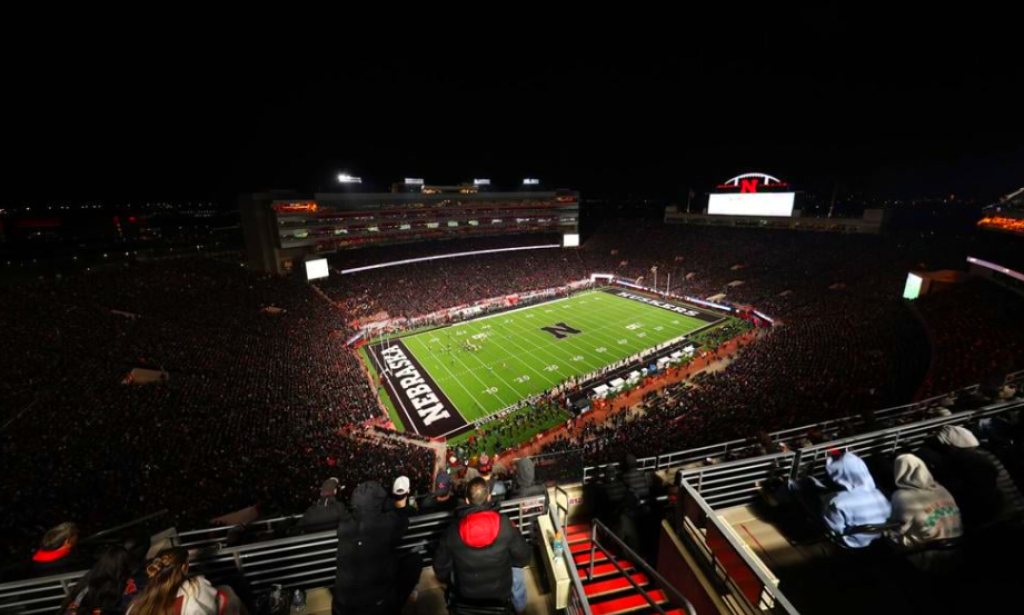Enter Jared Hertzel. The Director of Agronomy and Sports Turf was tasked with one of the most difficult jobs of his tenure. On paper, Hertzel described the concept as a “logistical nightmare.” Though it may have felt that way, Hertzel’s efforts were key in making Memorial Stadium a true nightmare-type of atmosphere.
Hertzel’s background runs deep within the Nebraska program. The former Wayne State baseball player transferred to the University of Nebraska-Lincoln and first joined the program in 2006. He worked at Haymarket Park under the softball program for seven years before shifting to a focus on football, before temporarily leaving the university.
He rejoined the program in 2025, after a three-year break in which he sold fertilizer and sports field materials. Hertzel’s new position involves oversight of the entire turf management program, where he’s helped transform it into one of the best in the country.
“My grandfather was an Agronomy professor on East Campus for years and years,” he said. “I always went to meet with him where the research plots were, so I grew up pretty much in it.”
Hertzel’s familiarity with the university is what made him the perfect candidate to lead the charge in creating a plan for Nebraska’s field design, a process that started earlier than fans may realize.
“There were about three or four of us who knew what was going to happen before it was going to happen, maybe a month, maybe two months before,” Hertzel said. “It was kind of up in the air, but when we knew they announced they were going to do a blackout game, that’s when the minds started rolling pretty quick.”
The final product, black end zones with a black Nebraska “N” at midfield, was the reward for excessive planning and exhaustive behind-the-scenes work. The process went smoothly, but it doesn’t mean that it was easy by any means.
Surprises are hard to keep. It’s even harder to keep them when they revolve around the Huskers’ biggest game of the season, a nationally televised blue-blood matchup.
Hertzel worked with athletic director Troy Dannen to delay the painting process for as long as possible. Like any good idea, there were challenges. The crew initially intended to paint the field on Friday night, but the quick turnaround and drying time made the plan unrealistic.
One of the most difficult parts of the process, according to Hertzel, was the constant traffic of camera and production crews working to prepare for the game. The field crew began with a clear coat on Wednesday night, but with over one hundred eyes on them working in and out of the stadium, there were only so many precautions they could take.
Dannen officially broke the news in a press conference on Thursday, Oct. 30, while announcing head coach Matt Rhule’s contract extension.
Though the stresses of secrecy were off Hertzel’s plate, other environmental factors played a role in preparing for the weekend.
“Most of the painting happened at night,” he said. “Wednesday, Thursday and Friday, we were there until one or two in the morning just because of the wind factor."
“It’s typical. When you start painting, that’s when the wind starts to swirl. If it was below 7 mph, we were good. We were very lucky it didn’t rain on Saturday.”
Nebraska has many university employees who work tirelessly to make Lincoln one of the best college atmospheres in sports, and this was evident in Hertzel’s crew. Though the original plan included painting only the end zones and the midfield logo, it was quickly decided that everything would be black; there would be no red in sight. And there wasn’t.
Hertzel and his team were responsible for applying 145 total gallons of black paint, with two full coats applied on each section of the field. The paint, which was shipped in from Ohio, served its purpose, and it was the removal process that gained traction across social media.
This process involved the same machine that the Minnesota Vikings use, a $100,000 unit that removes the paint directly from the turf. Simply put, Hertzel describes it as a zero-turn mower with sprayers on the front and back of the machine, while in the middle, brushes and a suction piece suck up the used paint that’s coming off the field.
“They started removing it on Sunday morning, and it took us until Tuesday before they were done with everything that needed to be done,” he said.
Though the process brought challenges, Hertzel’s passion for his profession shone through in what was one of the most rewarding projects in recent Nebraska athletics history.
“It’s always a learning process,” Hertzel said. “Hands-on experience is the biggest thing you can get in this field.
“The grass doesn’t stop dying on the weekends.”
And it won’t, as long as Hertzel is in charge of Nebraska’s turf operations for the foreseeable future. Regardless of whether Nebraska wins continue to come to fruition on the field, the Huskers will surely be competing on the best playing surface in the country. For Hertzel, that’s a victory all on its own.



You must be logged in to post a comment.